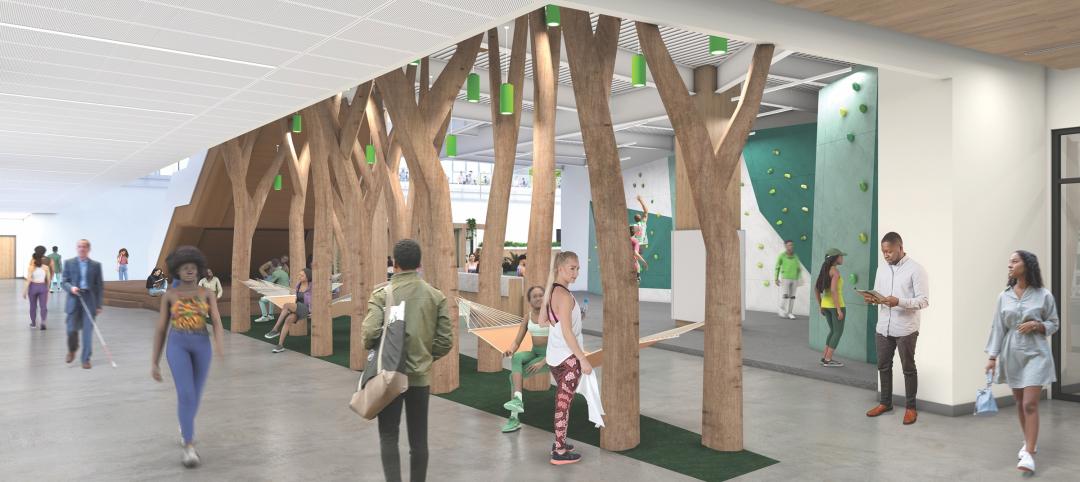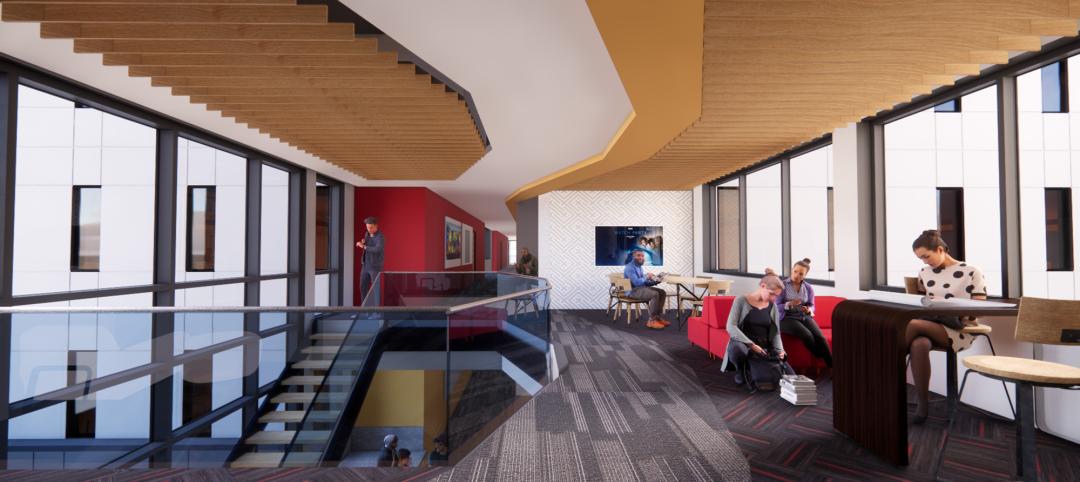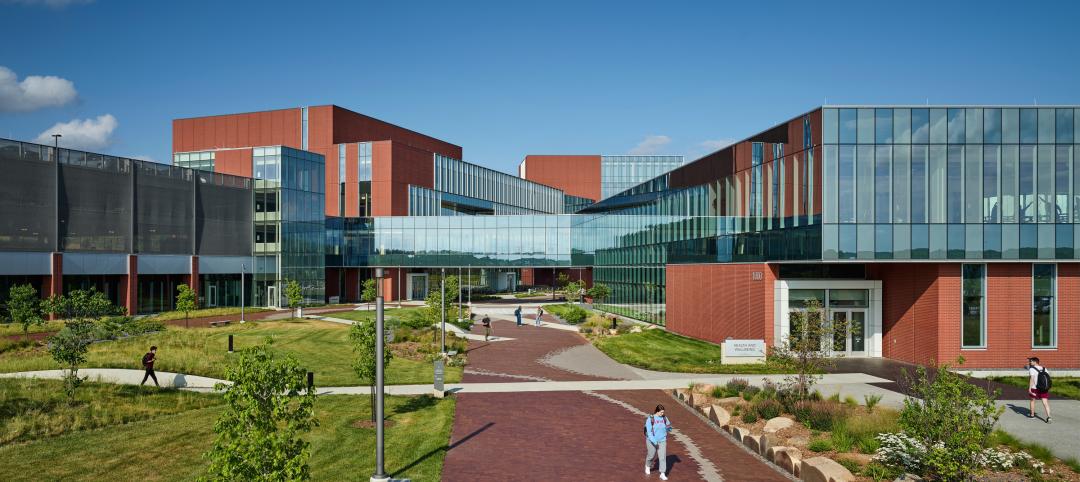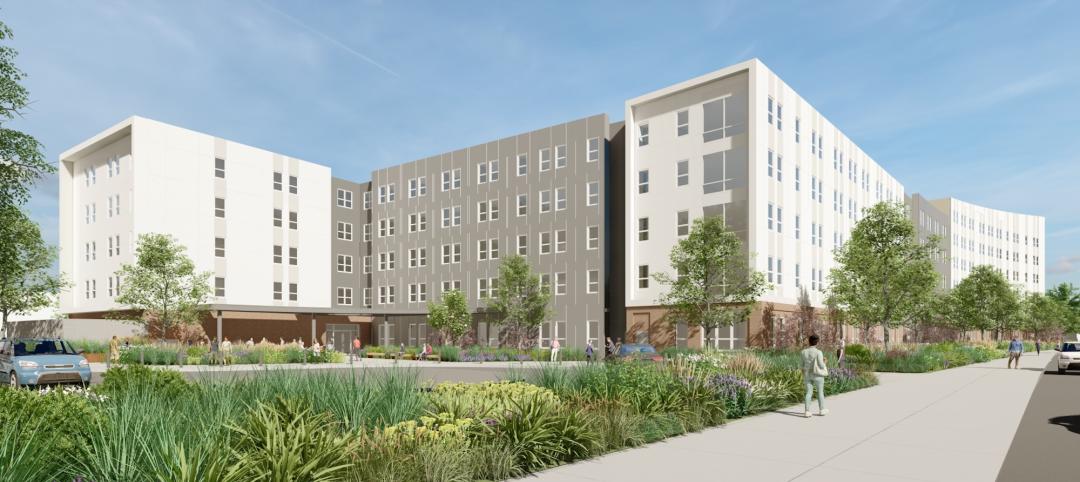The American Institute of Architects (AIA) is becoming more proactive in its efforts to help school districts address violence.
The Institute is launching a bipartisan effort on Capitol Hill to help state and local school officials access information and funding to design safer and securer schools.
It outlined its commitment to that process in a statement titled “Where We Stand: School Design & Student Safety.” In that statement, AIA says it will lead efforts at the local, state, and federal levels of government to update school design guidelines. It is also supporting collaborative and continuing education to achieve safe school design, and is striving to make such design eligible for federal grants.
AIA is taking a vanguard role in pushing for the establishment of a federal clearinghouse on school design that would become a repository of architectural and design resources that are accessible by educational officials, architects, and other design professionals.
AIA has gotten the ball rolling via its own website for school design safety resources that includes academic research and recent articles on this topic.
“Much of the public debate about school safety has focused on access to firearms and mental health services. Neither approach to solving school violence has progressed much over many years despite all-too-frequent tragedies. Architects can improve school safety through the power of design now,” AIA says in its statement.
“To design and build the new schools we need and to retrofit existing schools requires significant support and resources that go beyond just the architecture, engineering and construction communities. The AIA urgently calls on all policymakers and stakeholders to work with school communities to safeguard students and teachers while keeping schools positive places of learning and growth.”
On October 19, the Institute’s Committee on Architecture for Education is scheduled to host a national multidisciplinary symposium on “The Design of Safe, Secure & Welcoming Learning Environments,” at AIA’s headquarters in Washington, D.C. The event will bring together myriad perspectives from law enforcement, education, mental health experts, security consultants, and architect and design professionals.
The Institute and its members already have started to advise state officials on school design. RTA Architects’ Principal Stuart Coppedge, FAIA, presented to the U.S. Department of Education’s Federal Commissions on School Safety during its Aug. 7 listening session in Cheyenne, Wyo.
On August 1, AIA participated in the two-day Department of Homeland Security 2018 National School Security Roundtable, at which Karina Ruiz, AIA, Principal of BRIC Architecture, and Brian Minnich, AIA, LEED AP, Project Manager with GWWO Architects, explained how an open and positive learning environment can also be designed for safety and security.
Last May, the Institute appointed former AIA President Jeff Potter, FAIA, to Texas Governor Greg Abbott’s roundtable that identifies enhanced safety and security solutions for schools and communities in the state. Earlier this year, AIA Florida began working with that state’s Governor Rick Scott, state legislators, and the Florida Department of Education to develop design standards and best practices for the state’s schools.
Related Stories
Construction Costs | Oct 16, 2024
Construction Crane Index: Most major markets’ crane counts increase or hold steady in third quarter
Rider Levett Bucknall’s (RLB’s) latest Crane Index and Quarterly Cost Report shows continued decreasing cost inflation and crane counts increasing or holding steady in 10 of the 14 major markets it surveyed. The national average increase in construction costs was 1.07%, the lowest it’s been in the last three years.
AEC Tech | Oct 16, 2024
How AI can augment the design visualization process
Blog author Tim Beecken, AIA, uses the design of an airport as a case-study for AI’s potential in design visualizations.
University Buildings | Oct 15, 2024
Recreation and wellness are bedfellows in new campus student centers
Student demands for amenities and services that address their emotional and mental wellbeing are impacting new development on college campuses that has led to recreation centers with wellness portfolios.
Higher Education | Oct 14, 2024
Higher education design for the first-gen college student
In this Design Collaborative blog, Yogen Solanki, Assoc. AIA, shares how architecture and design can help higher education institutions address some of the challenges faced by first-generation students.
Performing Arts Centers | Oct 10, 2024
Studio Gang's performing arts center for Hudson Valley Shakespeare breaks ground
A new permanent home for Hudson Valley Shakespeare, a professional non-profit theater company, recently broke ground in Garrison, N.Y. The Samuel H. Scripps Theater Center includes a 14,850 sf performance venue that will serve as a permanent home for the theater company known for its sweeping open-air productions of classics and new works.
Sustainable Design and Construction | Oct 10, 2024
Northglenn, a Denver suburb, opens a net zero, all-electric city hall with a mass timber structure
Northglenn, Colo., a Denver suburb, has opened the new Northglenn City Hall—a net zero, fully electric building with a mass timber structure. The 32,600-sf, $33.7 million building houses 60 city staffers. Designed by Anderson Mason Dale Architects, Northglenn City Hall is set to become the first municipal building in Colorado, and one of the first in the country, to achieve the Core certification: a green building rating system overseen by the International Living Future Institute.
3D Printing | Oct 9, 2024
3D-printed construction milestones take shape in Tennessee and Texas
Two notable 3D-printed projects mark milestones in the new construction technique of “printing” structures with specialized concrete. In Athens, Tennessee, Walmart hired Alquist 3D to build a 20-foot-high store expansion, one of the largest freestanding 3D-printed commercial concrete structures in the U.S. In Marfa, Texas, the world’s first 3D-printed hotel is under construction at an existing hotel and campground site.
University Buildings | Oct 9, 2024
Des Moines University Medicine and Health Sciences opens a new 88-acre campus
Des Moines University Medicine and Health Sciences has opened a new campus spanning 88 acres, over three times larger than its previous location. Designed by RDG Planning & Design and built by Turner Construction, the $260 million campus features technology-rich, flexible educational spaces that promote innovative teaching methods, expand research activity, and enhance clinical services. The campus includes four buildings connected with elevated pathways and totaling 382,000 sf.
Student Housing | Oct 9, 2024
University of Maryland begins work on $148 million graduate student housing development
The University of Maryland, in partnership with Campus Apartments and Mosaic Development Partners, has broken ground on a $148.75 million graduate student housing project on the university’s flagship College Park campus. The project will add 741 beds in 465 fully furnished apartments.
Healthcare Facilities | Oct 9, 2024
How healthcare operations inform design
Amanda Fisher, Communications Specialist, shares how BWBR's personalized approach and specialized experience can make a meaningful impact to healthcare facilities.

















